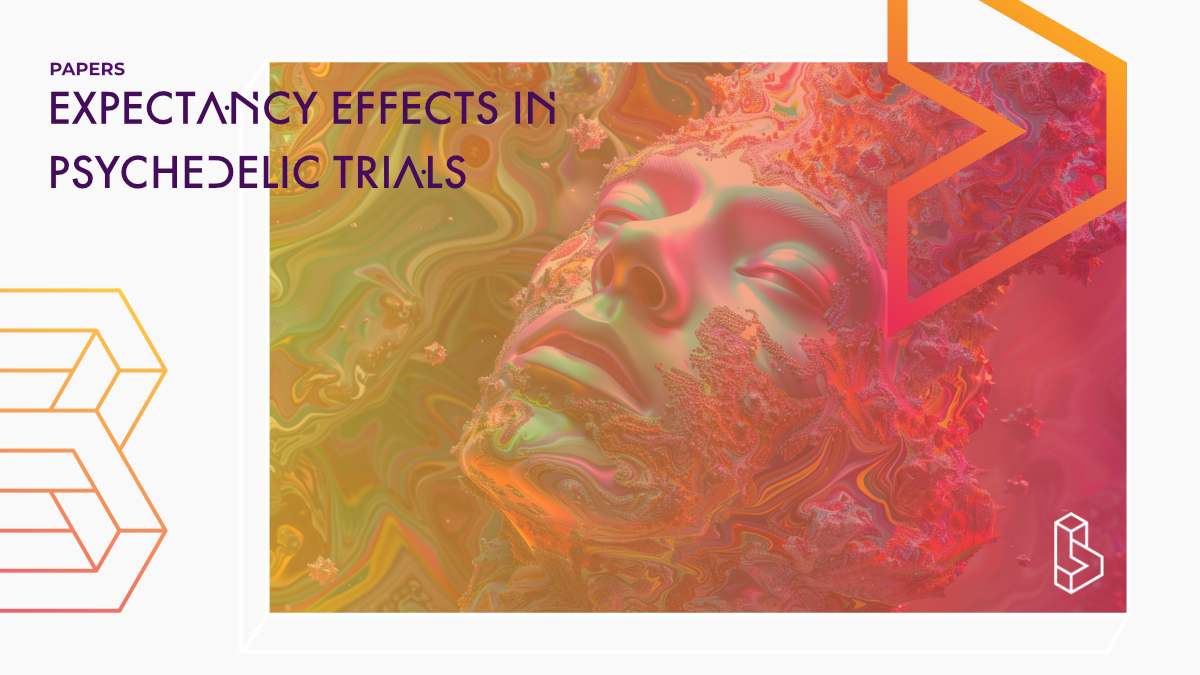This review (2024) explores the impact of participant expectations on psychedelic clinical trials. It highlights the challenge of maintaining blinding as doses increase and discusses the potential bias introduced by positive expectancy. The review covers expectancy effects in both micro- and macrodose trials, suggesting that understanding and managing expectancy could enhance trial rigour and treatment outcomes in future psychedelic research.
Abstract of Expectancy effects in psychedelic trials
“Clinical trials of psychedelic compounds like psilocybin, LSD and DMT have forced a reconsideration of how non-drug factors, like participant expectations, are measured and controlled in mental health research. As doses of these profoundly psychoactive substances increase, so does the difficulty in concealing the treatment condition in the classic double-blind, placebo-controlled trial design. As widespread public enthusiasm for the promise of psychedelic therapy grows, so do questions regarding whether, and how much, trial results are biased by positive expectancy. First, we review the key concepts related to expectancy and its measurement. Then, we review expectancy effects reported in both micro- and macrodose psychedelic trials from the modern era. Finally, we consider expectancy as a discrete physiological process that can be independent of, or even interact with, the drug effect. Expectancy effects can be harnessed to improve treatment outcomes, and can also be actively managed in controlled studies to enhance the rigor and generalizability of future psychedelic trials.”
Authors: Balázs Szigeti & Boris Heifets
Summary of Expectancy effects in psychedelic trials
Introduction
Psychedelic trials are notoriously difficult to blind effectively due to psychedelics’ strong psychoactive effects, and patients can confidently deduce whether they have been randomized into a psychedelic or placebo group. Unblinded trials may unleash a set of expectations often attributed to asymmetrically positive media coverage. The placebo response includes all health changes that result after administration of an inactive treatment, including behaviour related to being observed, regression to the mean and other non-specific effects of clinical care.
The placebo effect is the difference between the placebo and a no-treatment control condition. There are a number of mechanisms associated with placebo and nocebo effects, but expectancy is universally regarded as a key component. Expectancy itself has multiple components, for example, expectation of improvement if randomized into the active group, expectation of how quickly improvements will emerge, and expectation of side effects.
Unblinding and its relation to expectancy
Find this paper
Expectancy effects in psychedelic trials
https://doi.org/10.1016/j.bpsc.2024.02.004
Paywall | Google Scholar | Backup | 🕊
Cite this paper (APA)
Szigeti, B., & Heifets, B. (2024). Expectancy effects in psychedelic trials. Biological Psychiatry: Cognitive Neuroscience and Neuroimaging.

